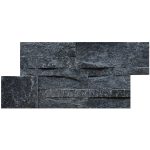Introduction
Limestone has been a popular building material for centuries due to its durability, versatility, and aesthetic appeal. Cultured limestone, also known as cast stone, is a manufactured alternative to natural limestone that offers similar benefits while providing more flexibility in design and production. In recent years, there has been a growing interest in exploring alternative materials to cultured limestone that can offer comparable characteristics and performance. This article aims to provide a comprehensive guide to cultured limestone alternatives, discussing their properties, advantages, and applications in various industries.
Properties of Cultured Limestone
Before delving into the alternatives to cultured limestone, it is essential to understand the properties that make it a sought-after building material. Cultured limestone is typically composed of a mixture of crushed natural limestone, cement, sand, and other additives that are cast into molds to create a variety of shapes and sizes. The resulting material closely resembles natural limestone in appearance and texture, making it an attractive option for architectural and landscaping projects.
One of the key advantages of cultured limestone is its versatility in design. Unlike natural limestone, which is limited by the availability of suitable quarry sites and the constraints of extraction and transportation, cultured limestone can be produced in a wide range of colors, textures, and finishes to meet the specific requirements of different projects. This flexibility allows architects and designers to create custom pieces that complement the overall aesthetic of a building or landscape.
In addition to its aesthetic appeal, cultured limestone offers excellent durability and weather resistance. The addition of cement and other binders in the manufacturing process enhances the strength and longevity of the material, making it suitable for use in both interior and exterior applications. Cultured limestone is also relatively low maintenance compared to natural stone, as it is less prone to staining, cracking, or weathering over time.
Advantages of Cultured Limestone Alternatives
While cultured limestone has many desirable properties, there are several reasons why designers and builders may opt for alternative materials. One of the primary considerations is cost. Cultured limestone can be more expensive than natural stone due to the manufacturing process involved and the customization options available. Alternative materials that mimic the look and feel of limestone at a lower price point can be an attractive option for budget-conscious projects.
Another advantage of exploring cultured limestone alternatives is the opportunity to reduce environmental impact. The production of cultured limestone involves the use of cement, which is a significant source of carbon emissions. By choosing alternative materials that require less energy and resources to manufacture, builders can contribute to sustainability goals and reduce their carbon footprint. Sustainable options such as recycled materials or innovative composites offer environmentally friendly alternatives to traditional building materials.

Furthermore, the availability of alternative materials can provide greater design flexibility and creativity. While cultured limestone offers a wide range of customization options, some designers may prefer materials that offer unique textures, colors, or patterns that cannot be easily achieved with cast stone. By experimenting with new materials and techniques, architects and builders can push the boundaries of traditional design and create innovative and inspiring spaces.
Applications of Cultured Limestone Alternatives
The versatility of cultured limestone alternatives makes them suitable for a wide range of applications in various industries. In Stepstone paver features for outdoor living , alternative materials can be used for cladding, flooring, countertops, and decorative elements to add a touch of elegance and sophistication to residential, commercial, and institutional buildings. High-performance composites such as engineered stone or sintered surfaces offer excellent durability and stain resistance, making them ideal for high-traffic areas and outdoor installations.
In the landscaping and hardscaping industry, cultured limestone alternatives can be used for creating custom features such as fountains, planters, and sculptural elements that enhance the beauty of outdoor spaces. Lightweight and durable materials like fiber-reinforced polymers or precast concrete allow designers to experiment with intricate designs and intricate details that would be difficult to achieve with natural stone. These materials are also more cost-effective and easier to transport and install, making them a preferred choice for landscape architects and contractors.
In the furniture and decor sector, cultured limestone alternatives can be incorporated into custom pieces such as fireplace surrounds, mantels, and tabletops to add a touch of luxury and sophistication to interior spaces. Innovative materials like terrazzo, which combines recycled aggregates with epoxy resin, offer a sustainable and stylish alternative to traditional stone surfaces. By exploring new materials and finishes, designers can create unique and timeless pieces that stand out in any room.
Conclusion
As the demand for sustainable and innovative building materials continues to grow, the exploration of cultured limestone alternatives presents exciting opportunities for architects, designers, and builders to push the boundaries of traditional design and construction. By understanding the properties, advantages, and applications of alternative materials, professionals can make informed decisions that meet their project requirements while contributing to environmental and aesthetic goals. Whether it is reducing costs, minimizing environmental impact, or enhancing design creativity, the use of alternative materials offers a promising future for the building industry.
